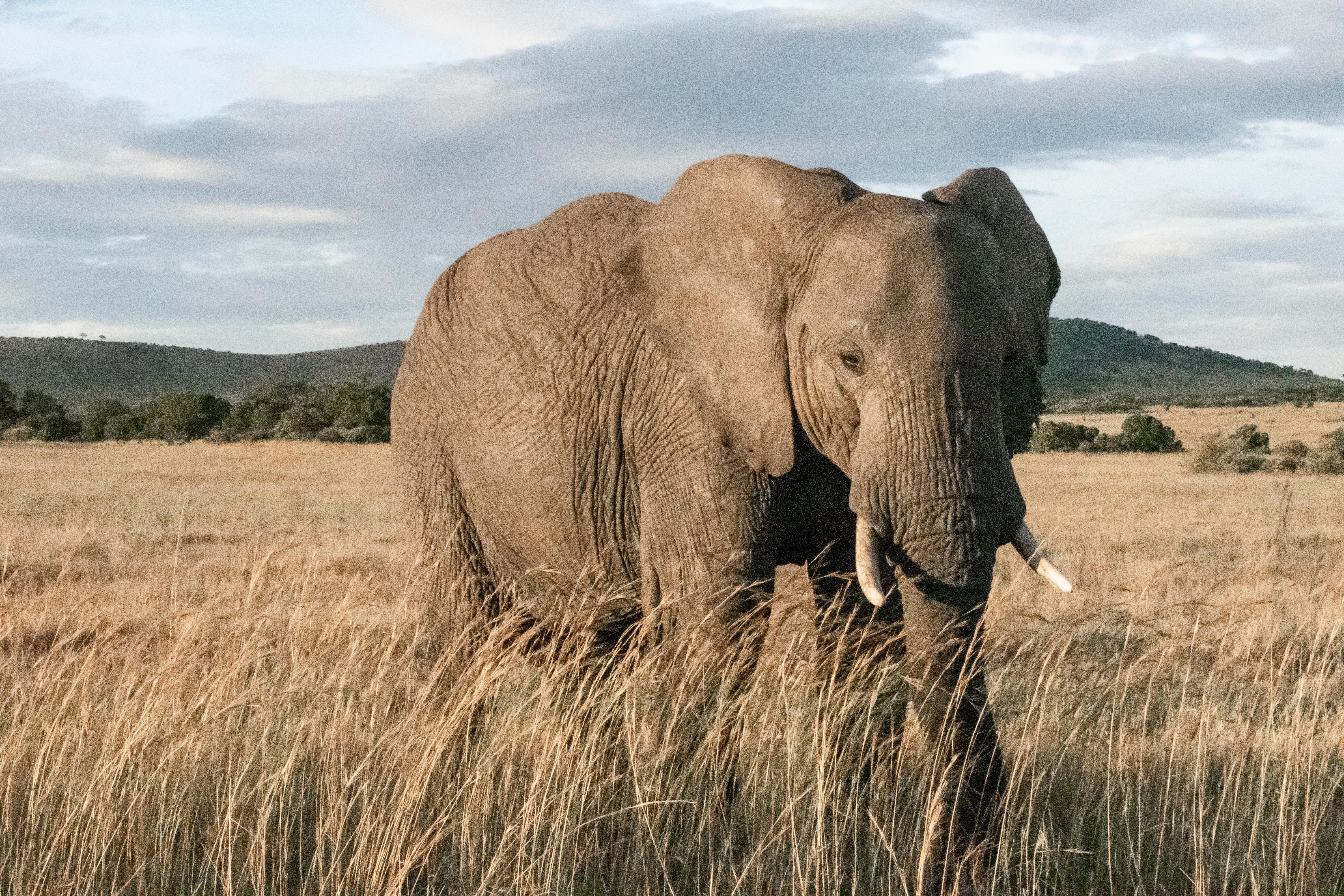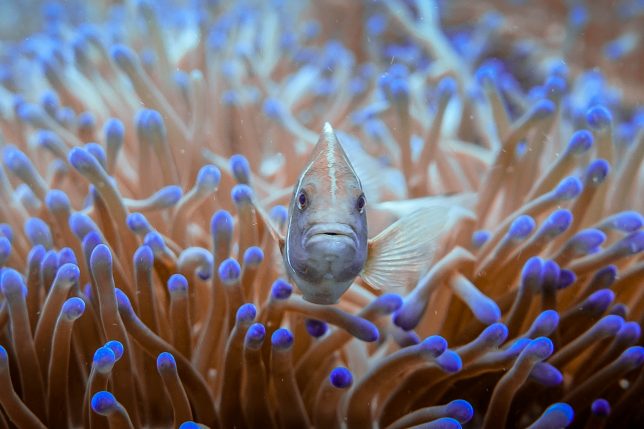Bioinspired solutions can be good not only for people, but also for the organisms offering the inspiration.
By Rachel Crowell, ensia (CC BY-ND 3.0)

August 18, 2020 — African bush elephants can break through fences and destroy crops or large trees — including iconic and endangered ones. These missteps could be deadly to the elephants as people who see them as a dangerous nuisance demand they be killed.
However, a natural and non-lethal elephant deterrent exists: African honeybees. Elephants are scared by the sight, sound and even smell of the bees and their hives. Farmers and conservation organizations such as Save the Elephants have installed hives along key fence lines. But the bees’ food and water requirements can make the hives costly to maintain.
What if, wondered Mark Wright, an insect ecologist and integrated pest management expert at the University of Hawai’i at Mānoa, you could design something that would mimic the pheromones emitted by alarmed honeybees, thereby also deterring elephants? Wright is developing a blend of substances found in honeybee alarm pheromones that could produce that effect.
Wright says he’s still perfecting the mixture — which uses synthetic versions of the compounds rather than extracting them from bees — so it can evoke a “consistent and gentle” deterrence response. “You don’t want 50 elephants storming around and crashing into things,” he says. However, if the blend isn’t bothersome enough, the elephants won’t leave.
Innovators have been using nature as a role model for decades. Sometimes the invention just benefits people. But, as in the case of Wright’s bee-inspired elephant repellent, sometimes nature can benefit, too.
Possible Payback
So-called “bioinspired design” often starts with identifying plants or animals that excel in certain functions, says Marc Weissburg, co-director of the Georgia Institute of Technology’s Center for Biologically Inspired Design. For instance, pitcher plant rims are wildly slippery, earthworms’ bendy bodies make them top-notch burrowers, and tammar wallabies’ leg tendons are optimized to power their repeated hopping.
Next, researchers and designers investigate problems the observed capability might solve. This approach does not always include an aim to benefit nature, too. “People are just getting their minds wrapped around how to approach this from the standpoint of intentionally designing something, using biology, for a specific [human-benefiting] purpose,” Wright says.
In such instances, innovations can still end up indirectly helping the organisms that inspired them, however. Take Werewool. The startup is working on using proteins found in jellyfish, coral and other organisms to create fibers with certain properties (such as color, fluorescence or stretch) built into them, according to co-founder and CEO Chui-Lian Lee. Werewool researchers have created a prototype of a coral-inspired, dye-free fiber that’s naturally colorful and fluorescent.
Since the fibers aren’t yet available commercially, it’s too soon to measure their impact. However, Lee and her colleagues say they are designing their products with the goal of reducing fashion-related pollution, including the release of microplastics, harmful dyes and finishing products into waterways. That could ultimately lead full circle to reducing harm to coral and jellyfish.
Baked In
In the case of ECOncrete, the links between nature-inspired innovations and benefits for nature are baked in from the start. The company manufactures artificial tidepools, seawalls and other products inspired by structures found in the natural world. These products, which are used to provide structure in coastal, marine and urban environments, are designed to be hospitable to specific ocean organisms, says Shimrit Perkol-Finkel, a marine ecologist and co-founder and CEO of the company. The structures provide storm buffering and help limit coastal erosion, helping communities avoid or reduce flooding and other storm damage.
Perkol-Finkel says that ECOncrete’s proprietary concrete mixture makes structures stronger and more durable than those made from traditional concrete, which benefits humans. She says that the structures have complex surfaces with textures and other design elements that are made to mimic natural features that are hospitable to certain species for which natural habitat is shrinking. This complexity is also less hospitable to invasive species, enabling these structures to increase biodiversity while discouraging the presence of nuisance organisms.
“We design for the marine life,” Perkol-Finkel says. “That was the goal.”
Clear and Direct Benefits
At least one organization has found the perceived limited direct benefit to organisms to be a deterrent to focusing on nature-inspired design. San Diego Zoo Global (SDZG), a nonprofit that operates the San Diego Zoo and related facilities, once had its own center for bioinspiration. The center closed after SDZG pivoted its focus from being inspired by nature to benefiting nature directly.
Nevertheless, interest remains strong in using nature’s inspiration to create the innovations of tomorrow. And for at least some, those creations will also benefit nature in return.
Editor’s note: Rachel Crowell wrote this story as a participant in the Ensia Mentor Program. The mentor for the project was Hillary Rosner. In line with Ensia’s ethics statement, we disclose that Ensia editor in chief Mary Hoff in another capacity recently wrote a piece for AskNature about coral proteins. Rachel Crowell included both in this story with no input from Ensia staff, and the circumstance is purely coincidental.

